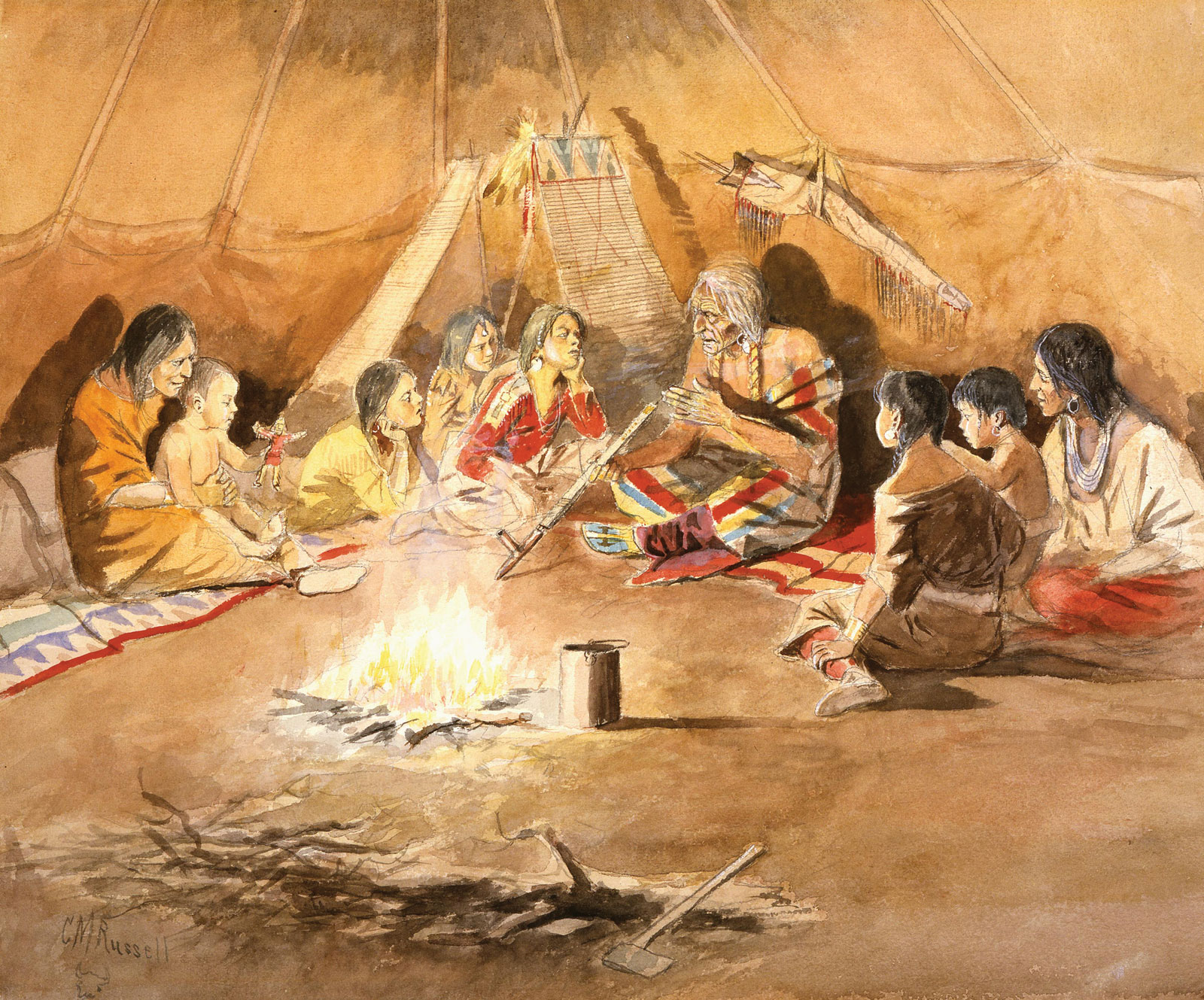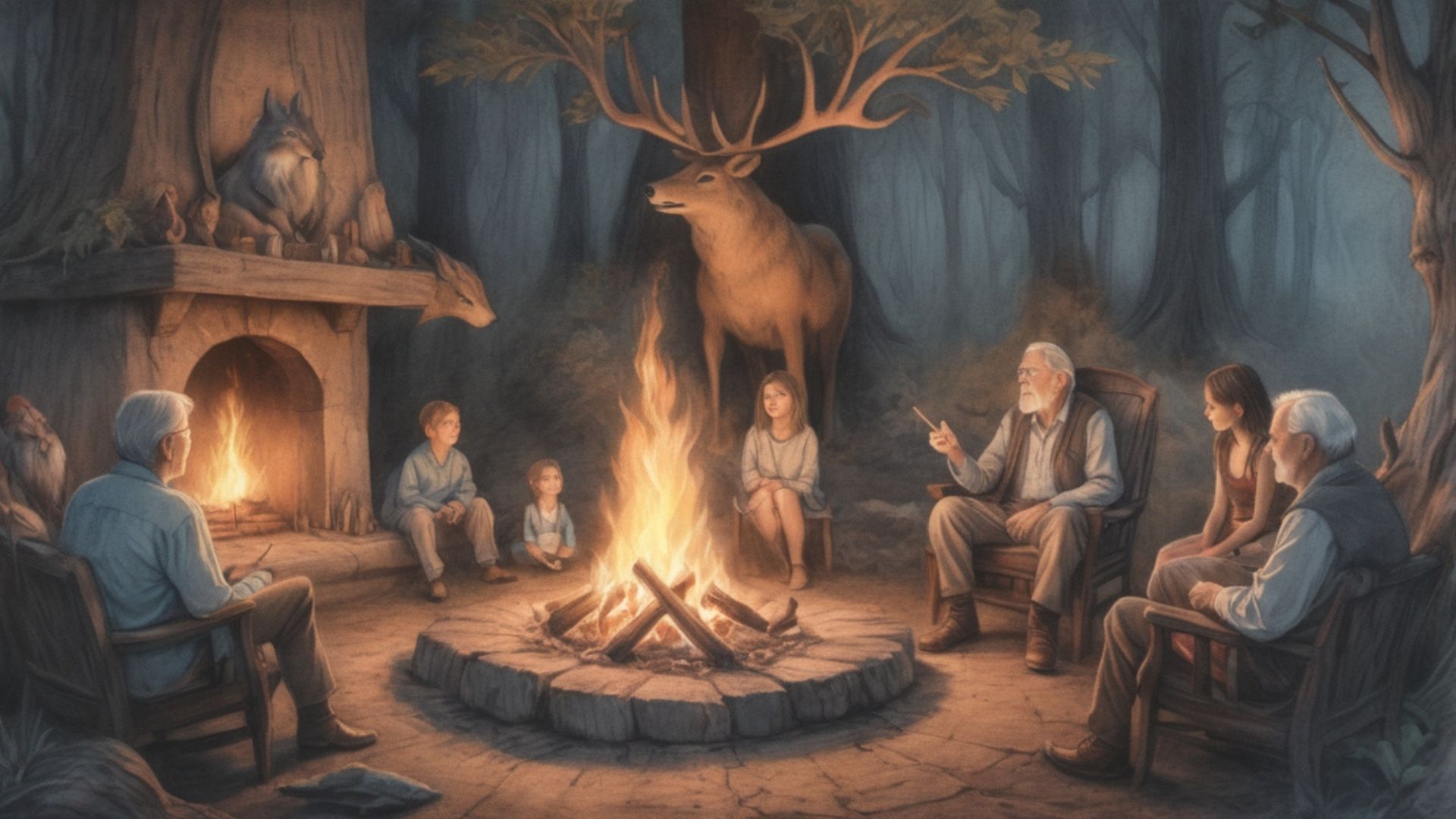
Northern Cheyenne Winter Storytelling: Sacred Narratives and Cultural Transmission
As winter descends upon the Northern Plains, blanketing the landscape in a hushed, stark beauty, the Northern Cheyenne people turn inward, not just to the warmth of their homes, but to the enduring warmth of their collective memory. This is the season for storytelling, a profound, sacred practice that transcends mere entertainment. Northern Cheyenne winter storytelling is a vital, living artery of cultural transmission, weaving together sacred narratives, historical truths, moral lessons, and spiritual understanding, ensuring the heartbeat of a resilient people continues to reverberate through generations.
The decision to reserve storytelling for the colder months is not arbitrary; it is deeply rooted in Cheyenne cosmology and respect for the natural world. During the warmer seasons, the land is alive with activity: hunting, gathering, ceremonies, and the vibrant life of animals and plants. To tell stories, particularly those of creation or about animal beings, during this active period would be seen as disrespectful, potentially disturbing the spirits or the creatures themselves. Winter, with its long, dark nights and the forced introspection of the season, provides the perfect canvas. The world outside sleeps, inviting the mind to journey inward, to listen, and to learn. The flickering firelight, the shared warmth, and the communal gathering create an atmosphere conducive to deep listening and reflection, transforming a simple act of speaking into a sacred ceremony.
At the heart of Northern Cheyenne winter storytelling are the sacred narratives – the ancient accounts that define their worldview, their origins, and their relationship with the divine. These are not merely myths but foundational truths. Paramount among these are the creation stories, which often begin with Ma’heo’o (the Great Spirit or God). These narratives detail the creation of the world, the stars, the land, the animals, and finally, the Tsistsistas (Cheyenne people). They explain how balance was established, how the sacred pipe came to be, and the fundamental principles that govern all life. These stories instill a deep reverence for creation, reminding listeners that they are an integral, interconnected part of a sacred whole, not separate from it.
Beyond creation, other sacred narratives recount the origins of specific ceremonies, cultural practices, and significant spiritual gifts. Tales of Sweet Medicine, the revered prophet who brought the Sacred Arrows and the Cheyenne laws, are central. These narratives explain the moral and ethical framework that has guided the Cheyenne for centuries, detailing the importance of honesty, bravery, generosity, and respect. They are blueprints for living a good life, emphasizing communal responsibility over individual ambition.
Then there are the Wihio (Trickster) tales. While often humorous and seemingly lighthearted, Wihio stories serve a crucial didactic purpose. Wihio, sometimes foolish, sometimes wise, often gets into trouble through greed, vanity, or lack of foresight. Through his misadventures, listeners learn about consequences, the complexities of human nature, and the importance of adhering to societal norms and moral principles. These tales provide a safe space to explore difficult behaviors and their repercussions, teaching discernment and critical thinking without direct admonishment. As one elder might explain, "Wihio shows us what not to do, but he also reminds us that even foolishness can teach a lesson."

Interwoven with these sacred narratives are historical accounts – tales of migration, battles, triumphs, and profound suffering. These are not just dates and names, but living histories imbued with the emotions, struggles, and resilience of ancestors. Stories of the Dull Knife Fight (1878-1879) and the Fort Robinson Breakout, for instance, are told not only to remember past injustices and courage but to reinforce the enduring spirit of the Cheyenne people, their unwavering fight for freedom and their connection to their homelands. These narratives connect contemporary Cheyenne to a lineage of strength and survival, forging a powerful sense of identity and collective memory. Family histories, detailing specific clan origins, significant ancestors, and unique family traditions, further enrich this tapestry, connecting individuals directly to the broader Cheyenne narrative.
The act of storytelling itself is the primary vehicle for cultural transmission. It is an intergenerational bridge, predominantly flowing from elders to younger generations. Grandparents, aunts, and uncles become the living libraries, their voices carrying the weight of centuries of wisdom. Children learn not just the plots of stories but the nuances of Cheyenne language (Tsėhésenėstsestōtse), the rhythm of traditional speech, and the deeper meanings embedded within metaphors and allegories. This oral tradition is far more than rote memorization; it involves active listening, interpretation, and the gradual absorption of an entire worldview.
Through these narratives, core Cheyenne values are imparted. Respect (Ma’heo’o nehoo’ohe) for elders, for family, for the land, and for all living beings is a recurring theme. Generosity (He’amone’ohe) and the importance of sharing are demonstrated through heroic figures and communal actions. Bravery (Ho’ohtsesta) and resilience in the face of adversity are celebrated. These stories provide a moral compass, guiding individuals on how to navigate the world, interact with their community, and honor their heritage. They are the living law, taught through example and consequence.
Beyond morality, storytelling fosters a profound spiritual connection. By recounting the deeds of Ma’heo’o, the teachings of Sweet Medicine, or the sacredness of ceremonies, listeners are drawn into a spiritual realm, reaffirming their place within the Cheyenne cosmos. It is a way of remembering who they are as a people, their covenant with the land, and their unique spiritual journey. This connection provides comfort, meaning, and a sense of belonging in a world that often seeks to diminish Indigenous identities.
In an era of rapid change and globalization, Northern Cheyenne winter storytelling faces challenges. The loss of fluent Cheyenne language speakers, the allure of digital media, and the passing of elders threaten the direct transmission of these vital narratives. However, the Northern Cheyenne community is actively engaged in revitalization efforts. Language immersion programs, digital archiving projects, and initiatives to pair young people with elders are working to ensure these stories endure. There is a deep understanding that the survival of the stories is inextricably linked to the survival of the culture itself.
The enduring power of Northern Cheyenne winter storytelling lies in its ability to adapt and persist. It is a testament to the resilience of a people who have faced immense adversity but have always found strength in their cultural heritage. These sacred narratives, shared in the quiet intimacy of winter nights, are more than just tales; they are the very essence of Northern Cheyenne identity, a continuous thread connecting past, present, and future. They are the lessons, the laws, the laughter, and the tears of generations, breathed into life anew each winter, ensuring that the spirit of the Tsistsistas continues to shine brightly against the long night.
